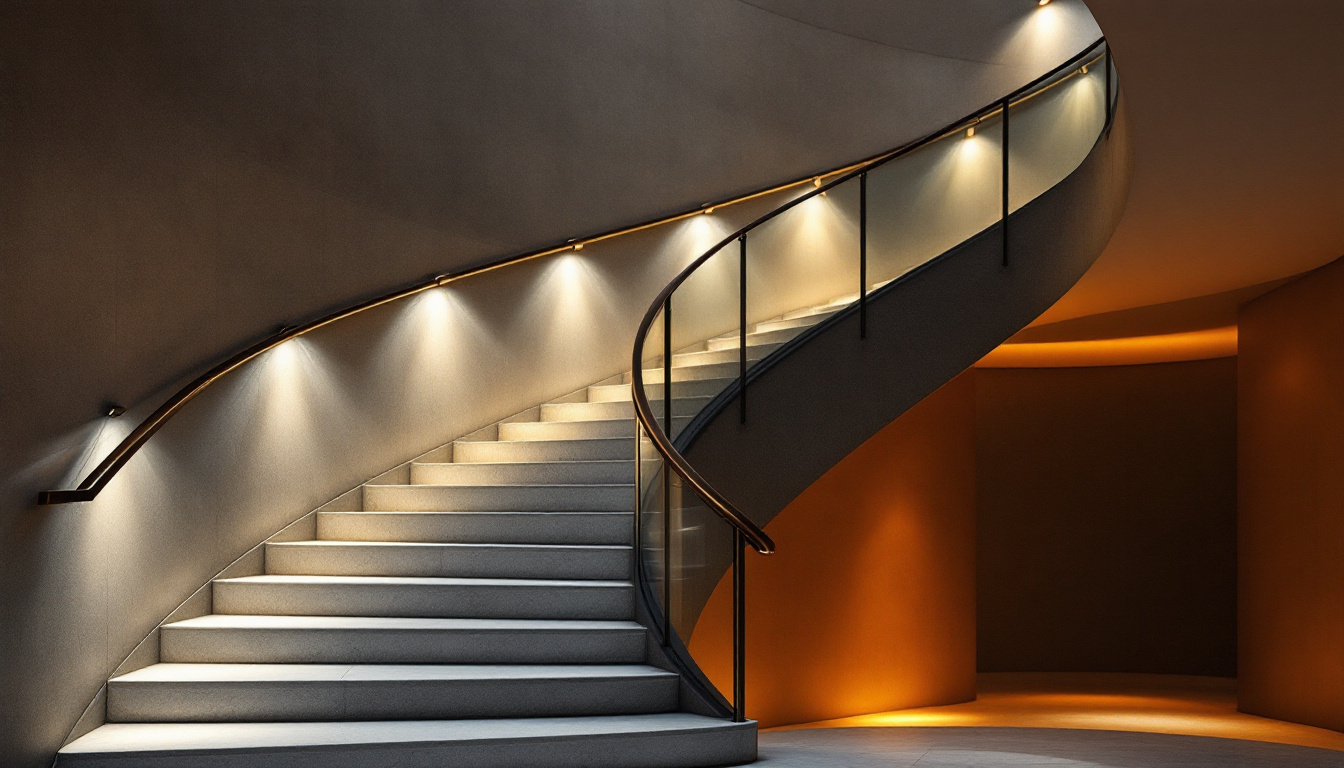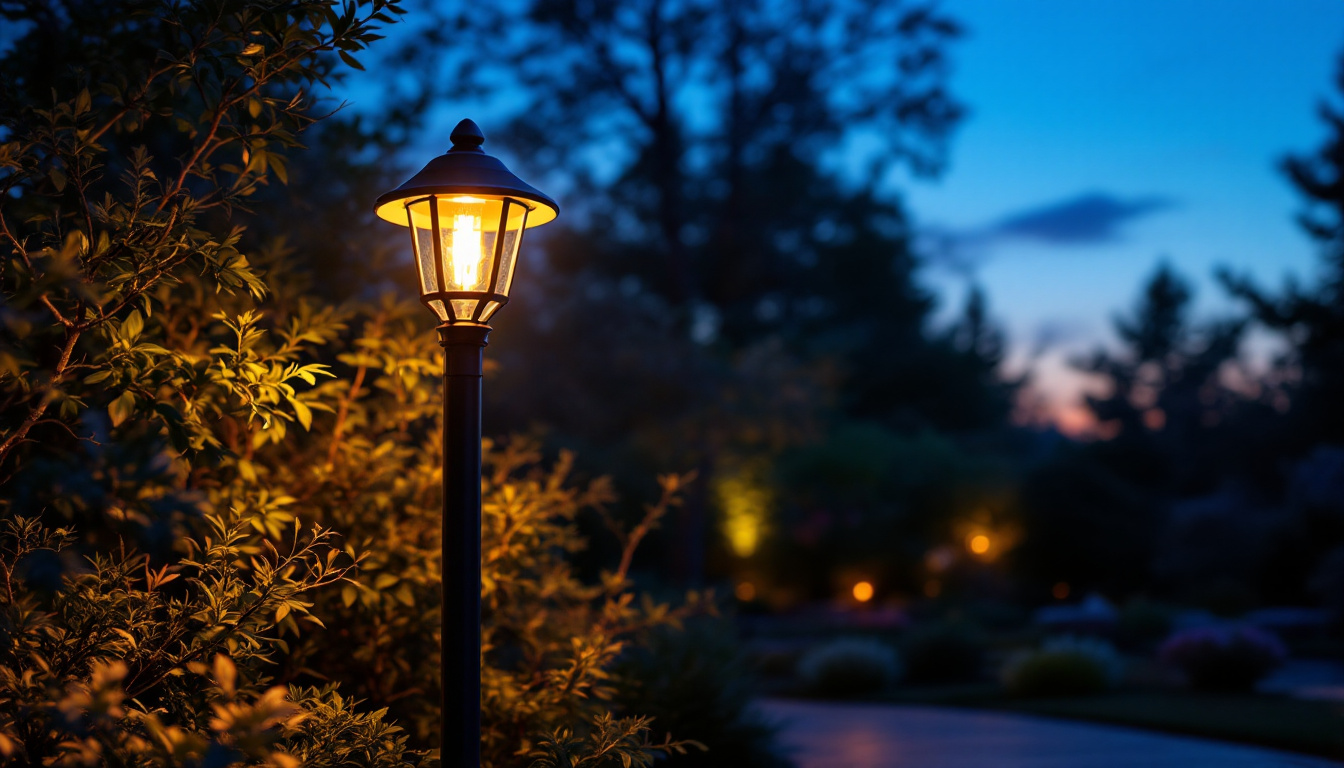
Lighting plays a crucial role in enhancing the safety, aesthetics, and functionality of staircases. For lighting contractors, understanding the best practices for stair lighting is essential to deliver high-quality results that meet client expectations. This article delves into effective strategies, design considerations, and installation techniques that can help lighting professionals create well-lit stairways.
Stairs are often a focal point in homes and commercial spaces, serving both functional and aesthetic purposes. Proper lighting is essential for ensuring safety, preventing accidents, and enhancing the overall ambiance of the area. Poorly lit staircases can lead to falls, injuries, and a negative impression of the space.
Moreover, effective stair lighting can highlight architectural features, create a welcoming atmosphere, and improve the overall design of the building. For lighting contractors, recognizing the multifaceted role of stair lighting is the first step in delivering exceptional service.
Safety should always be the primary concern when designing stair lighting. Adequate illumination helps users navigate stairs with confidence, reducing the risk of slips and falls. It is essential to ensure that all steps are evenly lit, with no dark spots that could lead to accidents.
Using lighting that minimizes glare is also crucial. Bright lights can create harsh shadows, making it difficult for individuals to perceive the depth and height of each step. Soft, diffused lighting is often more effective in providing a comfortable visual experience.
Additionally, incorporating motion sensors can enhance safety by automatically illuminating the stairs when someone approaches. This feature is particularly beneficial in homes with children or elderly residents, as it ensures that the stairs are always lit when needed, without requiring anyone to fumble for a switch in the dark. Furthermore, utilizing LED lights not only provides energy efficiency but also offers longevity, reducing the need for frequent replacements and ensuring consistent safety over time.
Beyond safety, stair lighting can significantly enhance the visual appeal of a space. Thoughtful lighting design can accentuate the architectural features of the staircase, such as handrails, balusters, and the surrounding walls. By using various lighting techniques, such as uplighting or downlighting, contractors can create a dramatic effect that transforms the staircase into a stunning focal point.
Incorporating decorative fixtures, such as wall sconces or pendant lights, can also add character and style. The choice of color temperature and light intensity plays a vital role in setting the mood and atmosphere of the space.
Moreover, the integration of smart lighting systems allows for customizable settings that can adapt to different occasions or times of day. For instance, a warm, inviting glow can be set for family gatherings, while brighter, cooler tones may be preferred for a more energetic environment during daytime. By blending functionality with artistry, stair lighting can become a key element in the overall design narrative of a home or commercial space, creating a seamless transition between aesthetics and utility.
When selecting lighting fixtures for staircases, contractors must consider several factors, including the size of the space, the design style, and the intended use of the stairs. Different types of fixtures can achieve various effects, and understanding their characteristics is key to a successful installation. Proper lighting not only enhances safety by illuminating each step but also adds to the aesthetic appeal of the home, creating a welcoming atmosphere as one ascends or descends the staircase.
There are several types of lighting fixtures suitable for stair lighting, each offering unique advantages. Recessed lighting is a popular choice, as it provides a clean, unobtrusive look while delivering even illumination. These fixtures can be installed in the ceiling or along the stair treads, ensuring that each step is well-lit. The ability to adjust the angle of recessed lights can also help focus light where it is most needed, reducing shadows and enhancing visibility.
Wall-mounted sconces are another excellent option, providing both functional and decorative lighting. They can be positioned at eye level to create a warm glow along the walls, enhancing the overall ambiance of the staircase. Sconces come in a variety of styles, from modern minimalist to ornate vintage designs, allowing contractors to match the fixtures to the overall decor of the home. Furthermore, using dimmable sconces can provide flexibility, allowing homeowners to adjust the brightness based on the time of day or occasion.
For a more dramatic effect, pendant lights can be suspended above the staircase, creating a stunning visual impact. These fixtures can serve as statement pieces, drawing attention to the staircase while providing ample light. The height at which pendant lights are hung can also be adjusted to create different moods; lower hanging fixtures can create an intimate atmosphere, while higher placements can open up the space and make it feel more expansive.
In today’s environmentally conscious world, energy efficiency is a significant consideration for lighting contractors. LED lighting has become the go-to choice for stair lighting due to its long lifespan and low energy consumption. LEDs are available in various color temperatures, allowing contractors to select the perfect hue for their projects. The versatility of LED lights means they can be used to create a variety of effects, from bright, daylight-like illumination to softer, warmer tones that create a cozy environment.
Additionally, incorporating smart lighting solutions can further enhance energy efficiency. Motion sensors and dimmers can be installed to ensure that lights are only on when needed, reducing energy waste and extending the life of the fixtures. Smart lighting systems can also be programmed to adjust automatically based on the time of day or occupancy, providing convenience and further reducing energy costs. As technology advances, integrating smart home features into lighting design is becoming increasingly popular, allowing homeowners to control their stair lighting with ease from their smartphones or voice-activated devices.
Effective stair lighting requires a thoughtful design approach that considers both functionality and aesthetics. By employing various design techniques, lighting contractors can create a well-lit environment that enhances the user experience.
Layered lighting involves combining different types of lighting to create a balanced and dynamic illumination scheme. For staircases, this can include ambient lighting, task lighting, and accent lighting. Ambient lighting provides general illumination, while task lighting focuses on specific areas, such as the steps themselves. Accent lighting can highlight architectural features or artwork along the staircase.
By layering these different types of lighting, contractors can achieve a more comprehensive and visually appealing lighting solution. This approach not only enhances safety but also adds depth and interest to the space.
Staircases often have unique architectural features that can be accentuated through strategic lighting. For example, using uplighting to illuminate the underside of a staircase can create a dramatic effect, while downlighting can highlight the texture of the walls or the design of the handrails.
Additionally, using colored or textured lighting can add a creative touch, allowing contractors to customize the lighting design to match the overall aesthetic of the space. This attention to detail can make a significant difference in the final outcome.
Proper installation is crucial for ensuring that stair lighting functions effectively and safely. Lighting contractors should adhere to best practices to guarantee a successful outcome.
Before installation, it is essential to plan the layout of the lighting fixtures carefully. This involves determining the optimal placement of each fixture to ensure even illumination across the entire staircase. Contractors should consider factors such as the height of the ceiling, the width of the stairs, and any obstructions that may affect the light distribution.
Creating a lighting plan that includes the type, location, and spacing of fixtures can help streamline the installation process and ensure that all areas are adequately lit. This planning phase is crucial for achieving the desired aesthetic and functional outcomes.
When installing stair lighting, contractors must adhere to local electrical codes and regulations. Proper wiring is essential for ensuring safety and preventing electrical hazards. It is advisable to use high-quality wiring and connectors to ensure long-lasting performance.
Additionally, contractors should consider the placement of switches and controls. Installing dimmers or motion sensors can enhance the functionality of the lighting system, allowing users to adjust the brightness according to their needs.
Once the stair lighting has been installed, regular maintenance is essential to ensure its continued effectiveness and longevity. Lighting contractors should educate clients on the importance of maintaining their lighting systems to prevent issues such as flickering lights or burnt-out bulbs.
Conducting regular inspections of the lighting fixtures can help identify potential problems before they escalate. Checking for loose connections, damaged fixtures, or burnt-out bulbs can ensure that the lighting remains safe and functional.
Encouraging clients to keep the fixtures clean and free from dust or debris can also enhance the performance and appearance of the lighting. Simple maintenance tasks can significantly extend the life of the lighting system.
As technology continues to evolve, lighting contractors should stay informed about the latest advancements in lighting solutions. Upgrading to newer, more efficient fixtures or smart lighting systems can improve energy efficiency and enhance the user experience.
By offering clients the option to upgrade their lighting systems, contractors can provide added value and ensure that their clients benefit from the latest innovations in lighting technology.
Stair lighting is an essential aspect of any lighting design, requiring careful consideration of safety, aesthetics, and functionality. For lighting contractors, understanding the best practices for stair lighting can lead to successful projects that meet client expectations and enhance the overall appeal of the space.
From selecting the right fixtures to employing effective design techniques and ensuring proper installation, each step plays a crucial role in creating a well-lit staircase. By staying informed about industry trends and advancements, contractors can continue to deliver exceptional lighting solutions that enhance both safety and beauty.
Ready to elevate your stair lighting projects with the highest quality fixtures at unbeatable prices? Look no further than LumenWholesale. Our spec-grade lighting selection is designed to meet the rigorous demands of any project, ensuring durability and performance. Say goodbye to middleman markups and hello to cost-effective, reliable lighting solutions. Plus, with free shipping on bulk orders, you can trust that you’re getting the best value without any hidden costs. Enhance the safety, beauty, and functionality of your stair lighting designs with LumenWholesale. Explore our wholesale lighting options now and secure the best value for your lighting needs.

Discover the key qualities that distinguish top lighting contractors when installing closet pull chain light fixtures.

Discover expert tips and essential considerations for lighting contractors when selecting and installing outdoor post lights.

Discover how Phoenix LED Lights are revolutionizing the lighting industry for contractors, offering energy efficiency, durability, and innovative design solutions that enhance project outcomes and client satisfaction..

Discover essential tips and strategies for lighting contractors to excel in mastering lighting canopies.